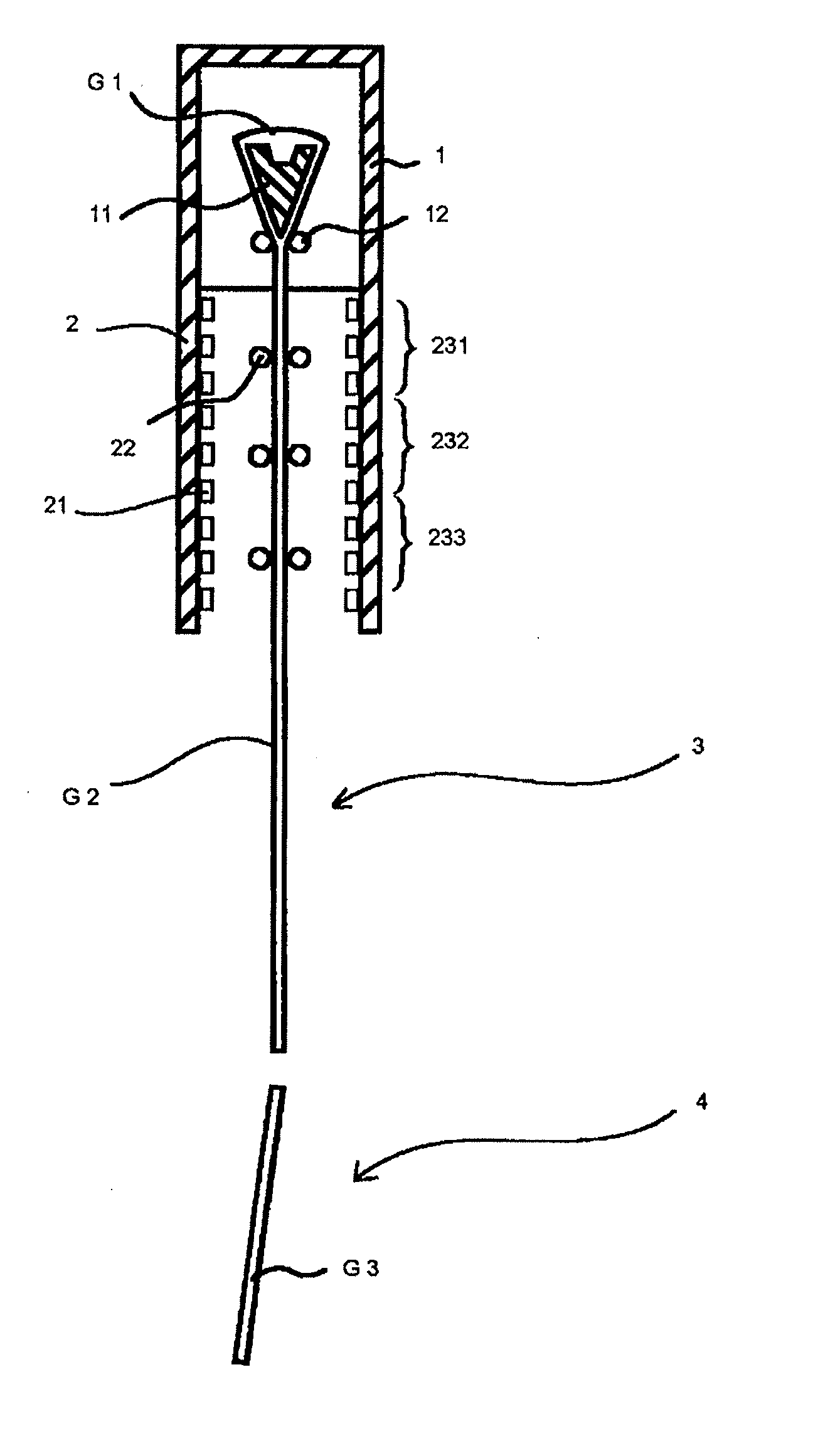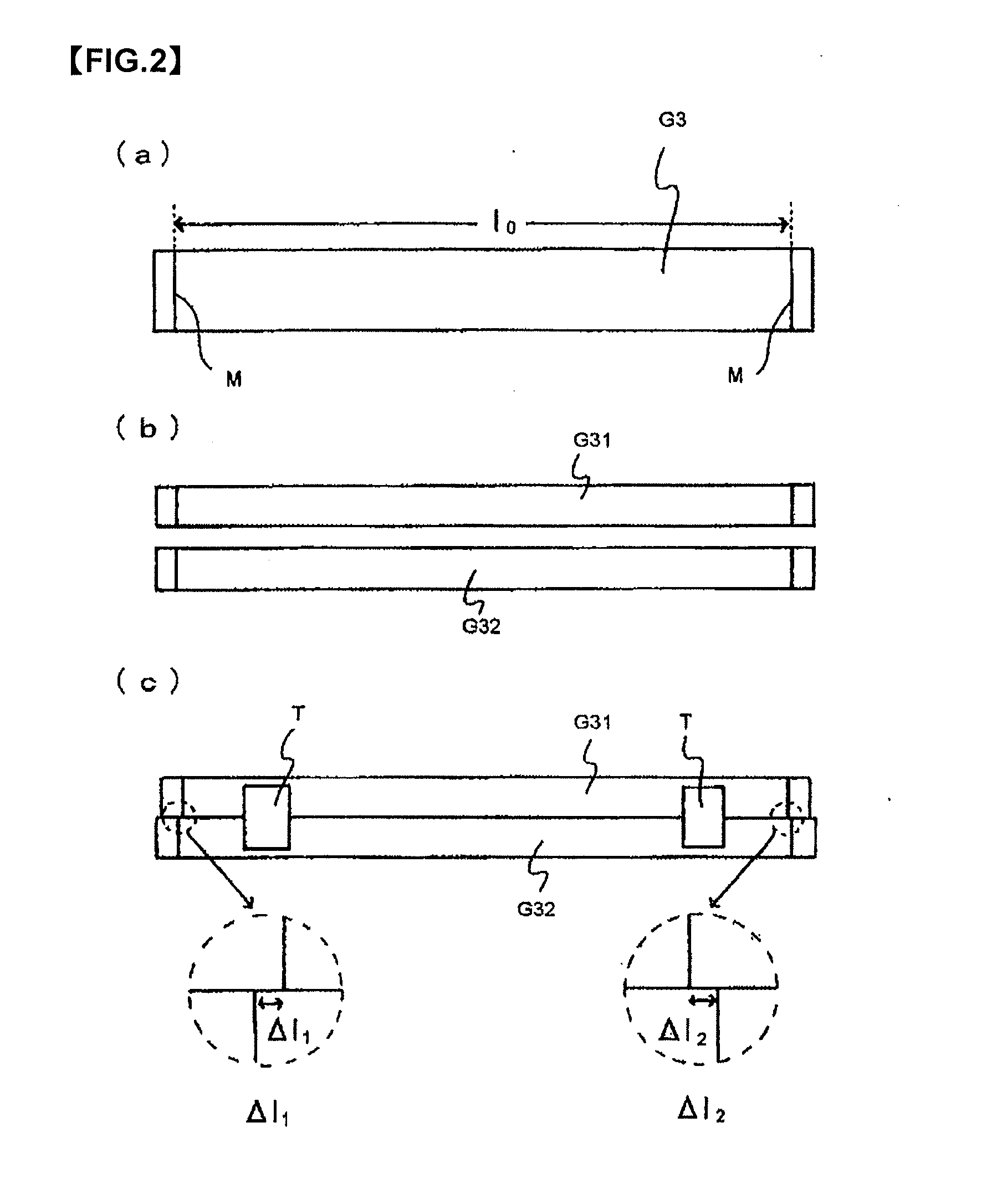Method for producing glass substrate and glass substrate
- Summary
- Abstract
- Description
- Claims
- Application Information
AI Technical Summary
Benefits of technology
Problems solved by technology
Method used
Image
Examples
examples
[0067]The present invention is hereunder described in detail by reference to the accompanying drawings.
[0068]FIG. 1 is an outline front view showing production equipment for a glass substrate in carrying out the present invention. The production equipment is for producing a glass substrate according to an overflow down draw method, and it includes a forming furnace 1 having a trough-shaped forming body 11 and cooling rollers 12 therein in this order from the top thereof; an annealing furnace 2 disposed in a lower portion of the forming furnace 1 and having heaters 21 and guide rollers 22 therein; and a cooling section 3 and a cutting section 4 provided in a lower portion of the annealing furnace 2.
[0069]The trough-shaped forming body 11 has a nearly wedge-shaped cross section and allows a molten glass G1 to be fed to overflow out from the top thereof and fuse at the bottom thereof to form a glass ribbon G2. The annealing furnace 2 anneals the glass ribbon G2. In detail, in the insid...
PUM
| Property | Measurement | Unit |
|---|---|---|
| Temperature | aaaaa | aaaaa |
| Temperature | aaaaa | aaaaa |
| Temperature | aaaaa | aaaaa |
Abstract
Description
Claims
Application Information
 Login to View More
Login to View More - R&D
- Intellectual Property
- Life Sciences
- Materials
- Tech Scout
- Unparalleled Data Quality
- Higher Quality Content
- 60% Fewer Hallucinations
Browse by: Latest US Patents, China's latest patents, Technical Efficacy Thesaurus, Application Domain, Technology Topic, Popular Technical Reports.
© 2025 PatSnap. All rights reserved.Legal|Privacy policy|Modern Slavery Act Transparency Statement|Sitemap|About US| Contact US: help@patsnap.com



